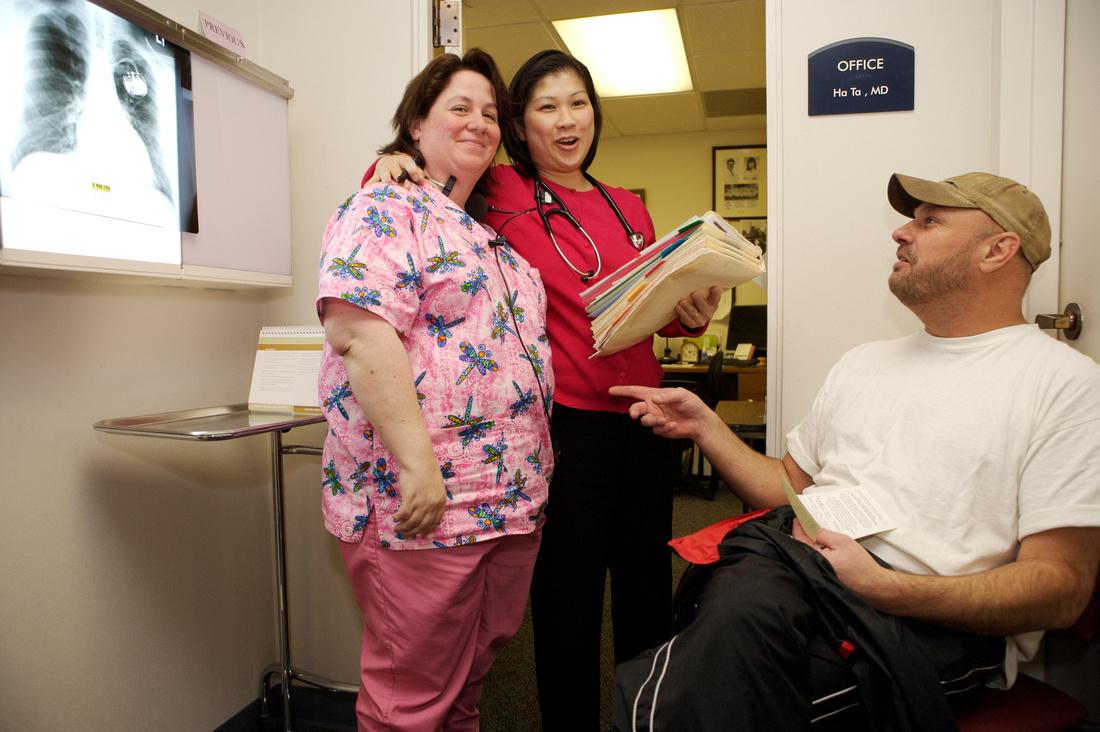
Summary
Successful integration of opioid treatment into HIV primary care depends on the provider community first agreeing that there is a problem to address. The goal of this module is to increase understanding of the intersection of opioid use and HIV and to assess the training group’s perceptions about risk among client populations.
Participants measure their current knowledge/awareness of the local community and clinic use of opioids and its intersection with HIV.
Materials Needed
- One piece of paper per small group
- One writing utensil per small group
- Whiteboard or paper and easel
- Clock or watch to time activity
- A computer and compatible LCD projector to play the PowerPoint presentation.
Two PowerPoint slides will be shown while participants work through the activity. Slide #1 during the explanation of the activity, and Slide #2 during the activity.
Slide #1: What is Substance Dependence?
The Diagnostic and Statistical Manual - IV (DSM-IV) describes addiction as "a maladaptive pattern of substance use.
Leading to clinically significant impairment or distress, as manifested by three (or more) of the following, occurring at any time in the same 12-month period:
- (1) Tolerance, as defined by either of the following:
- (a) a need for markedly increased amounts of the substance to achieve intoxication or desired effect
- (b) markedly diminished effect with continued use of the same amount of the substance.
- 2) Withdrawal, as manifested by either of the following:
- (a) the characteristic withdrawal syndrome for the substance
- (b) the same (or a closely related) substance is taken to relieve or avoid withdrawal symptoms.
- (3) The substance is often taken in larger amounts or over a longer period than was intended.
- (4) There is a persistent desire or unsuccessful effort to cut down or control the substance use.
- (5) A great deal of time is spent in activities to obtain the substance, use the substance, or recover from its effects.
- (6) Important social, occupational, or recreational activities are given up or reduced because of the substance.
- (7) The substance use is continued despite knowledge of having a persistent or recurrent physical or psychological problem. Which is likely to have been caused or exacerbated by the substance.
Slide #2: What is Substance Dependence? (cont.)
Activity
- Explain the activity.
- You will work in small groups to identify and answer the following questions:
- What indicators have you seen within the clinic or through chart and patient reviews to suggest opioid dependence?
- Is our clinic writing a lot of prescriptions for opioid pain medications?
- What trends have you seen through the media within the community? Read or heard , or heard during patient consults, to suggest local indicators of an opioid problem?
- What has been your experience interacting with opioid-addicted patients with and without medication-assisted treatment (MAT)?
- You will have 10 minutes to discuss and write down your group answers.
- You will work in small groups to identify and answer the following questions:
- Initiate the activity.
- Form small groups of approximately three people per group.
- Distribute paper and writing utensils.
- Debrief the activity.
- Ask each group to identify a spokesperson for their group.
- Go around the room and ask each group to share their findings.
- Where further discussion may be possible, ask spokesperson to provide support for their response/finding.
- Write down group responses for one comprehensive list.
- Address any misperceptions.
Slide #3: HIV and Substance Use
- Offer insight, and discuss with the full group the intersection of HIV and injection drug use.
- The intersection of opioid addiction, particularly injection drug use (IDU), and HIV is well documented.
- IDU is the second most frequent route of HIV transmission.
Slide #4: Shocking Statistics
- Full group discussion.
- Is this information surprising?
- Does this confirm what you said in small group discussions?
- How many of our HIV patients identified IDU as their transmission (or risk) category?
- How often do we prescribe opioid pain medications to our HIV patients?
- Do we know whether our HIV patients are being prescribed opioids by another physician?